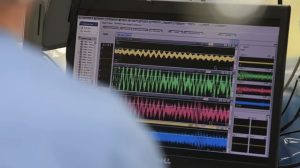Results from a retrospective study in Lancet Neurology reveal that high concentrations of neurofilament light proteins (NfLs) in blood plasma of HTT gene mutation carriers can predict clinical onset and disease progression in Huntington’s disease.1
Increased concentrations of NfL in plasma during the course of Huntington’s disease were independently associated with brain atrophy, and cognitive and motor dysfunction. Increases in plasma NfL closely matched those of cerebrospinal (CSF) NfL levels.2
For future trials, researchers recommend quantification of NfL increases to establish an accurate biomarker for the onset and progression of Huntington’s disease. Plasma measurements of NfL could be important in evaluating risk for onset and progression of Huntington’s disease beyond present-day prognostic factors. A strong connection between increased NfL concentration and CAG repeat count also implied there was a relationship with the genetic basis of Huntington’s disease.2
Future treatment management may involve regular testing for blood NfL levels to guide clinical decisions once more evidence is available.1
1. Peckel L. Neurofilament Light Protein Shows Strong Potential as Biomarker for Huntington’s Disease. NeurologyAdvisor website. Published July 06, 2017. http://www.neurologyadvisor.com/movement-disorders/nfl-protein-may-act-as-biomarker-for-huntingtons-disease/article/673369/. Accessed July 15, 2017.
2. Byrne LM, Rodrigues FB, Blennow K, Durr A, et al. Neurofilament light protein in blood as a potential biomarker of neurodegeneration in Huntington’s disease: a retrospective cohort analysis. Lancet Neurol. 2017;pii: S1474-4422(17)30124-2. [Epub ahead of print]
http://www.thelancet.com/pdfs/journals/laneur/PIIS1474-4422(17)30124-2.pdf




